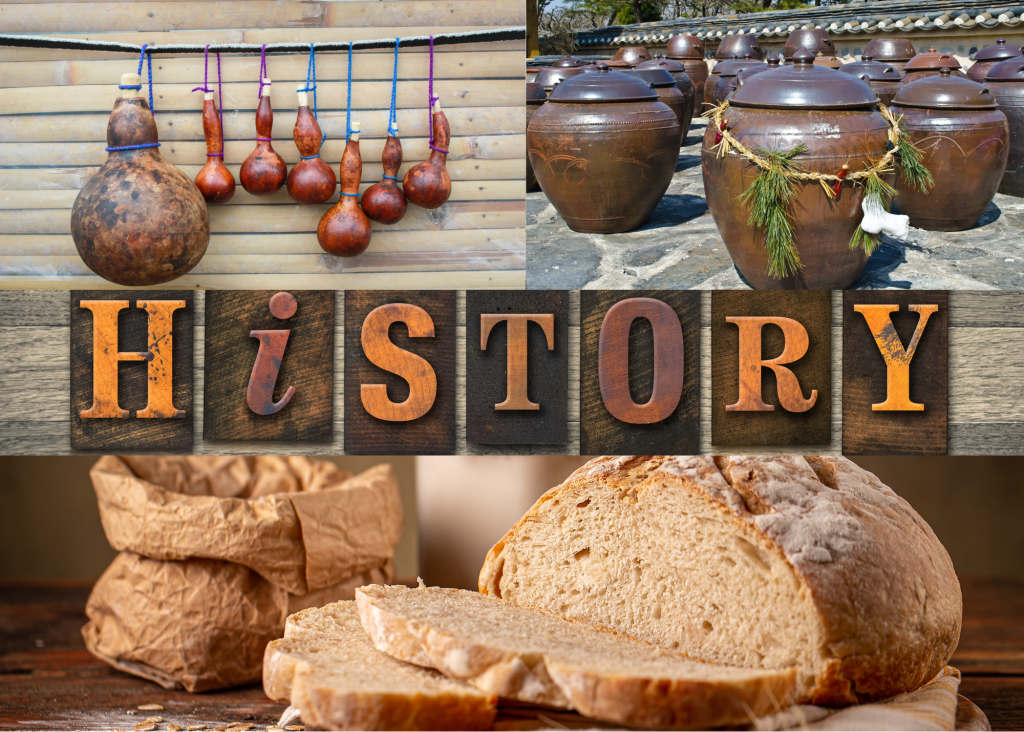
Time tested. Important. You might be thinking…I know where this is going. Sounds like history stuff. And you’d be right. But hear me out! There is so much to learn from history! Why is this important to me, though? I believe looking at which fermenting equipment has been time tested throughout history will help answer another pressing question. What fermenting equipment should I use today? So let’s see if they had it right way back when, or maybe we know better now? Or possibly a bit of both? Let’s discover the importance of time tested fermenting equipment by a look through the lens of history!
The History of Fermenting Equipment
The overview of fermentation as a whole is discussed in my post, A Brief History of Fermentation And Why This Is Important. Here we will just focus on the narrower topic of fermenting equipment or vessels.
Before we go any further, it would behoove me to mention that I will be referring to the term “anaerobic” quite often. I have thoroughly discussed the scientific process of fermentation in this post, so please check that out. It will give more weight to the importance of our discoveries in this discussion. For now, our working definition of “anaerobic” is describing an environment free from oxygen and resulting in the authentic and beneficial fermentation by lactic acid bacteria.
Now that we have done some housekeeping; onwards! Let’s hone in on historical, time tested fermenting equipment. What types of vessels and equipment were used traditionally?
The Time Tested Calabash Gourd and Animal Skins
The earliest historically supported report of fermentation occurring is with milk. This timeline is placed at roughly 10,000 B.C. There was no such thing as plastic at this point, and glass vessels weren’t largely used until 1500 B.C. Some areas used various metals for food containers. However, the common fermenting equipment was pretty basic, but efficient and useful in it’s simplicity.
Calabash Gourd
First, let’s talk about the calabash gourd.
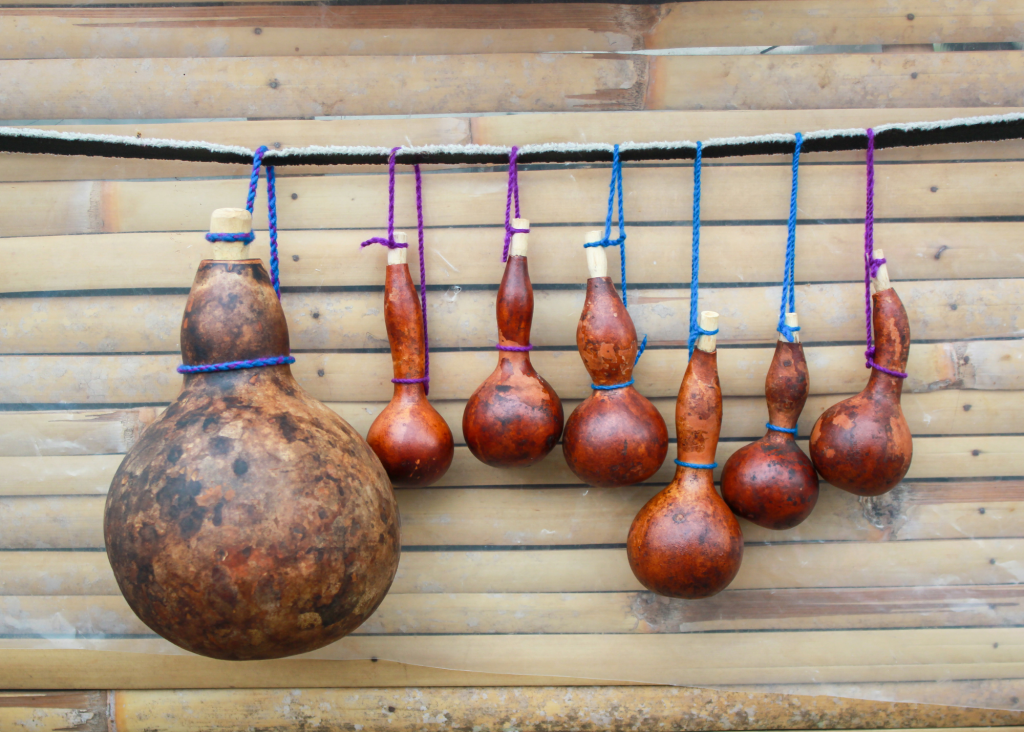
Process:
- The inside of the gourd is cleaned out
- A stopper is put in place after the fermenting contents are added
- For some types of fermented products, an additional step is included…
- The inside is gently rubbed with the end of a burnt stick. This imparts a particular flavor desirable for that product.
- Then the gourd is sealed tight and fermentation takes place.
The benefit of this system is multifold.
One, it is really cheap! Just grow and pick your gourd, clean it out, and voila! Amazing, cheap and effective fermenting vessel!
Two, it has the perfect environment for keeping a clean space and allowing fermentation to occur. The gourd allows gasses out, but does not allow oxygen in, and therefore makes the perfect anaerobic equipment for the ancient world. I say ancient, however this system is still used successfully today!
Animal Skins
Sticking with the topic of fermented milk, let’s talk animal skins.
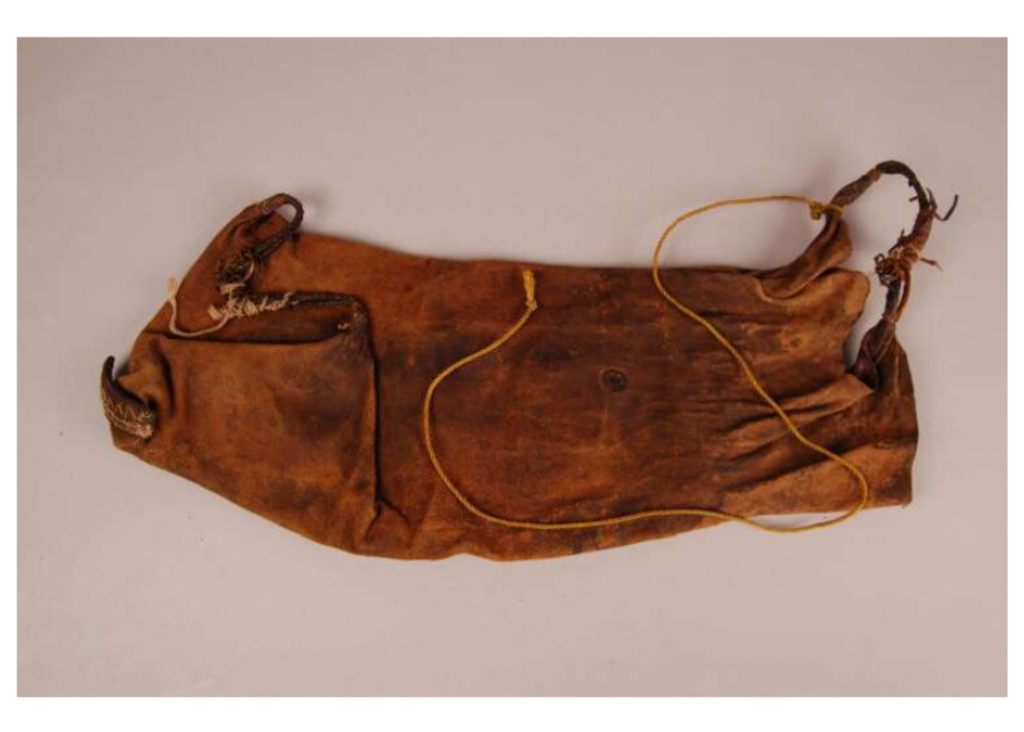
Here is the process for a fermented drink called gariss, which is traditional in Sudan:
- A bag is made from tanned goat skin
- Raw milk is poured into it
- The bag is then slung on the back of a camel, and it’s continuous gait shakes the milk
- Each day some milk is drawn out for drinking and fresh milk is added back in
This process can go on for many months. The reason the milk and fermented finished product can stay good for so long is due to the anaerobic condition of animal skins. It allows for fermentation gasses to escape, but does not allow oxygen in to spoil the milk.
The Time Tested Fermenting Pit
The next type of fermenting equipment we will look at is the fermenting pit.
Fish
In 2011, on the east coast of Sweden, a group of archeologists discovered the earliest food preservation plant utilizing a fermenting pit (9200 B.C.). It was essentially a long gutter that they filled with fish. In addition, pine bark and seal fat were added to the fish to acidify them since they didn’t have access to salt. Everything was wrapped in seal and boar skin and put into the pit. Lastly, the clay mud was put on top to seal it all in! Here we see another example of the importance of time tested fermenting equipment. An entire village’s welfare depended on getting this right.
Liquor
Another style of pit fermentation is found in traditional Chinese liquor making.
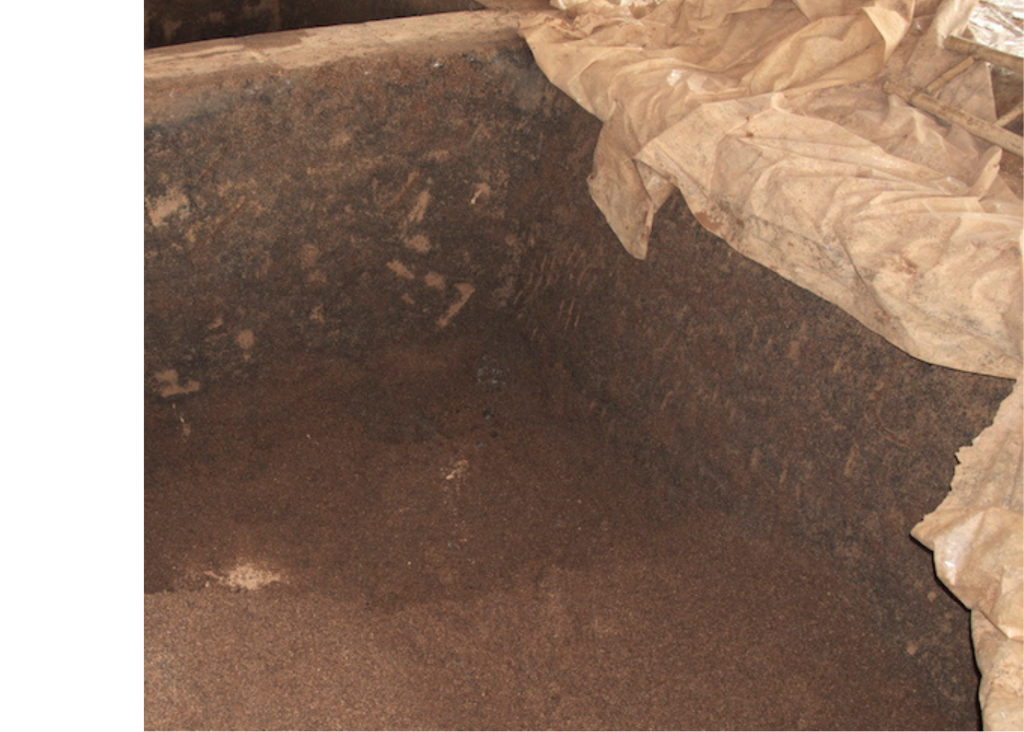
A rectangular pit is made in the ground and the walls are coated with clay and grain. This style of fermenting has been around for centuries and is still in use today.
The Time Tested Pottery Jar
The Chinese are still making magic happen with fermented drinks in pottery jars. This research article looks into different types of fermenting jars dating back to the 9000-7000 B.C. time frame.
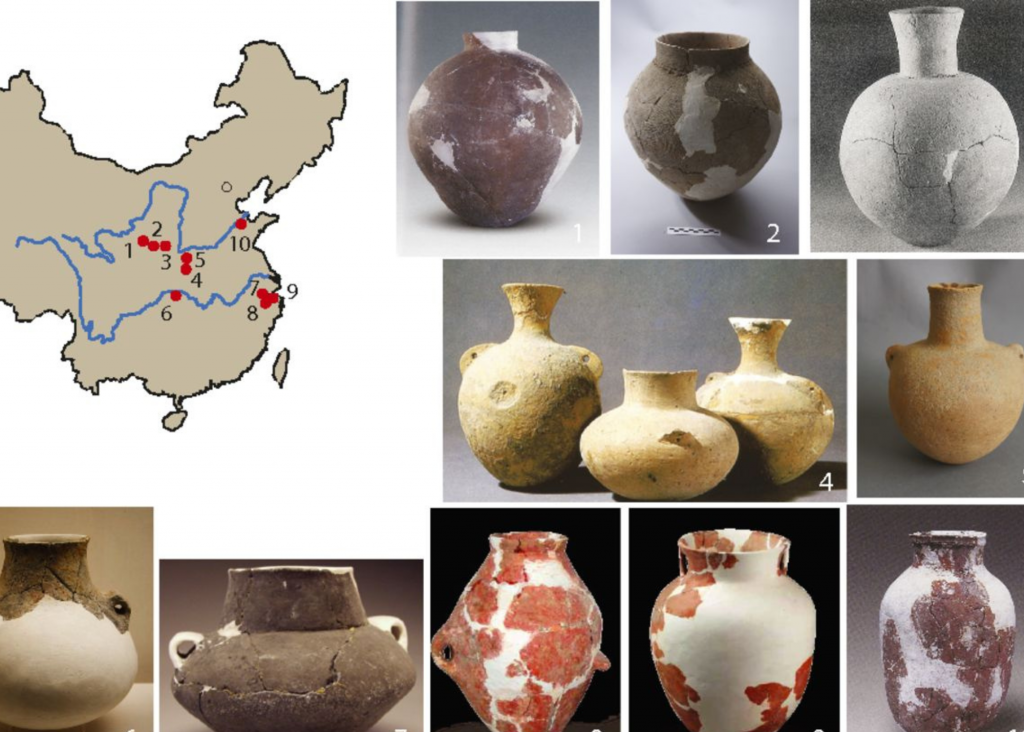
The jars used for fermenting and storing drinks are characteristically globular in shape with a tapered neck and mouth. This allows for easy filling (big middle section) and easy sealing (small neck/mouth) with wax. The Chinese certainly understand the importance of time tested fermenting equipment and process. They are arguably the best at it!
Fermented Bread
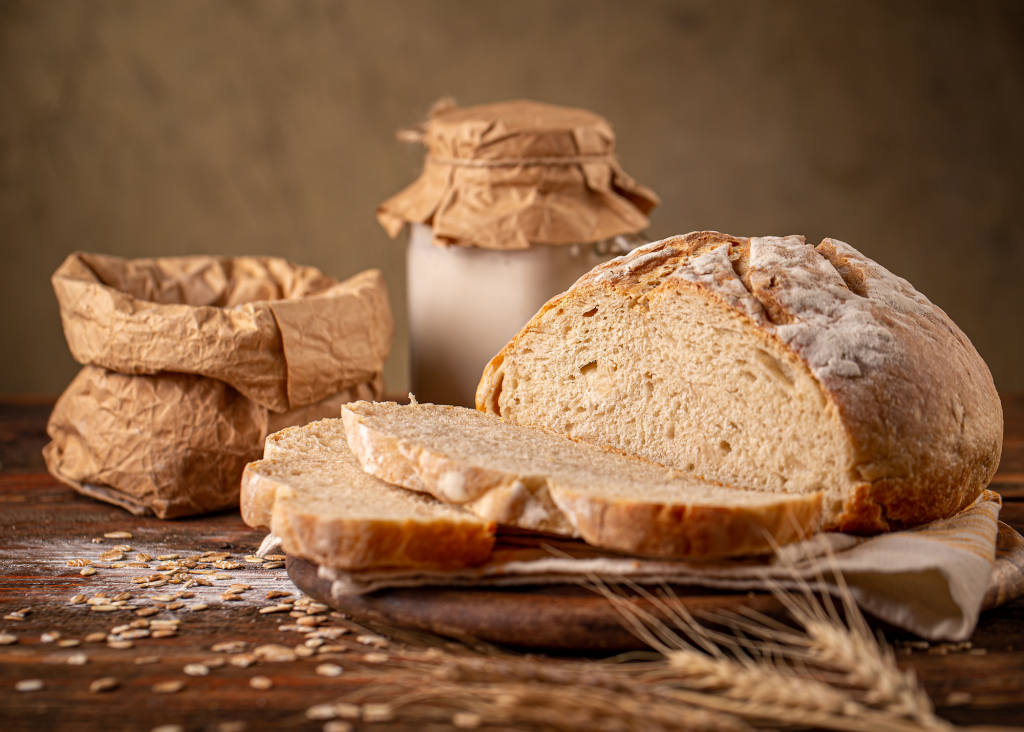
I must admit, it was difficult to discover out exactly what (if anything specific) ancient sourdough was fermented in (as opposed to baked in). However, in reading over several research articles, this one focuses on how to assess if bread has reached authentic sourdough status. The amount and variability of lactic acid bacteria present in the finished product is measured. If it doesn’t reach the required minimum amount, it is not deemed authentic sourdough.
Again referring to my post, The Science Behind Fermentation and It’s Benefits, I go more into detail on what lactic acid bacteria is and why it is the cornerstone of anaerobic fermentation. In order to achieve anaerobic fermentation, one needs to have an oxygen free environment, and this goes for sourdough bread as well.
Important Earthenware Fermenting Equipment
Vegetables are one of the first categories people think of when envisioning fermented food. The type of fermenting equipment used for vegetables really does depend on the kind of vegetable and style of product one is trying to create.
For instance, there are vegetables fermented in a brine solution of water and salt. There are also self-brining ferments, where salt is added to the produce to pull out the water and cover the vegetables. Shredding, chopping, or slicing of vegetables is also a preparation option. It all depends on the end product. Either way, an earthenware jar such as something shown below is another option to ferment vegetables in beyond utilizing pits, gourds and animal skins.

What Have We Learned?
In all the time tested fermenting equipment examples we looked at, they all had one thing in common. Anaerobic environment. In the western culture, we can tend to think about fermenting as more of a health benefit than anything else. In ancient cultures and even today, fermentation is a means of preserving food. You never know when a draught will prevent a harvest. There was no refrigerator to help preserve your food (or chemicals for that matter), and the same is true today in many parts of the world. Fermenting was and is a way to simply survive. But the added benefit is all the health improvements that fermented foods afford!
Have we answered the questions we started with? I think so! The most important attribute of time tested fermenting vessels is the anaerobic environment. We can use this information to ascertain the potential effectiveness and benefit of whatever equipment we are looking at utilizing. Now comes the question…what is the best fermenting equipment for me to use today?
See other great posts about fermenting history, science and equipment below!
- The Science Behind Fermentation and it’s Benefits
- The Best Fermenting Equipment To Use
- Discussion on Ferments Exposed to Oxygen
- Are Mason Jars the Best Tools for Fermentation?
- Pros And Cons Of The Mason Jar For Fermenting
- Dialogue on the Mason Jar and Oxygen Diffusion
- Important Gasses In Fermentation
- The Best Salt For Fermenting: Part 1
- The Best Salt For Fermentation: Part 2


Leave a Reply